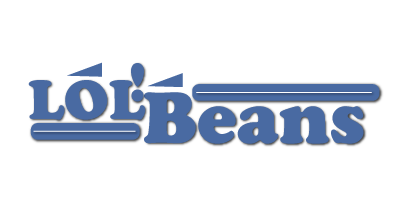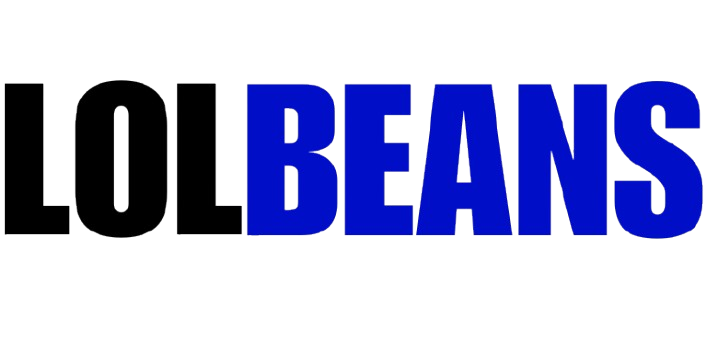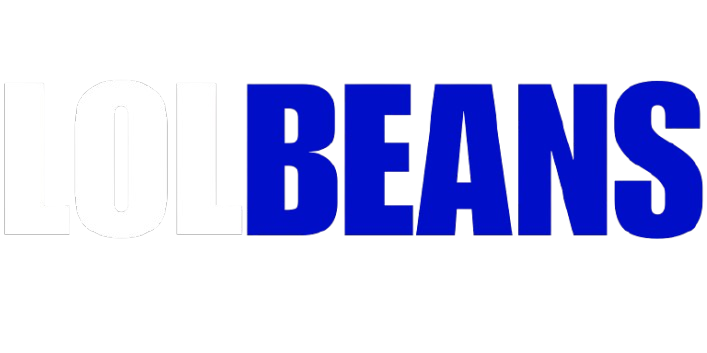Students across the globe struggle with abstract concepts that seem impossible to grasp through traditional teaching methods. Mathematics, physics, and chemistry often feel like foreign languages when presented without proper visual support. The breakthrough comes when educators discover innovative approaches that transform confusion into comprehension.
Online tutoring revolutionizes how students approach complex material by making the invisible visible through cutting-edge visualization techniques that turn abstract theories into tangible, understandable concepts.
Interactive Digital Whiteboards Transform Complex Ideas into Visual Stories
Modern technology has completely changed how educators present challenging material to struggling students. These digital platforms create dynamic learning environments where abstract theories become interactive experiences rather than static presentations.
In general, students who requested help less often (< 0.3) performed better than those who requested more often (≥ 0.7), highlighting the need for effective visualization tools that promote independent learning.
When students encounter particularly challenging scientific concepts, finding a physics tutor online is essential. These digital whiteboards empower such experts to visually deconstruct complicated formulas, guiding students through step-by-step processes that foster true understanding.
Real-Time Collaborative Drawing and Annotation
Teachers and students work together on shared canvases where equations come alive through colorful diagrams and interactive elements. Complex mathematical relationships transform into visual patterns that make sense when students see connections being drawn in real-time.
Multi-Layered Concept Mapping for Progressive Understanding
Advanced whiteboard features allow educators to build concepts layer by layer, revealing how basic principles connect to form more complex ideas. Students watch as abstract theories develop organically, creating mental frameworks they can reference later.
Color-Coded Visual Hierarchies for Information Organization
Strategic use of colors helps students categorize different types of information, making it easier to visualize abstract concepts and remember key relationships. This systematic approach reduces cognitive overload while building stronger comprehension.
Digital whiteboards provide an excellent foundation for visual learning, but imagine taking this visualization to the next level, where abstract concepts come to life in three-dimensional space.
Augmented Reality Integration Brings Abstract Mathematics to Life
AR technology pushes the boundaries of traditional tutoring by making mathematics and physics tangible and interactive. Students no longer struggle to imagine three-dimensional shapes or visualize molecular structures when they can manipulate them virtually.
3D Geometric Visualization in Virtual Space
Complex geometric proofs become intuitive when students can rotate, dissect, and rebuild shapes in virtual environments. Abstract spatial relationships suddenly make sense when viewed from multiple angles and perspectives.
Interactive Physics Simulations for Real-World Application
Virtual laboratories allow students to experiment with forces, motion, and energy without expensive equipment. They can adjust variables and immediately see how changes affect outcomes, building a deeper understanding of abstract ideas through hands-on exploration.
Gamified Learning Environments for Enhanced Engagement
Educational games transform boring drill sessions into exciting challenges where students earn points for mastering difficult concepts. This approach maintains motivation while building skills through repeated practice.
While AR creates immersive learning experiences, the true power emerges when these technologies adapt to each student’s unique learning style.
Personalized Learning Analytics: Identify Individual Visualization Preferences
Data-driven personalization ensures that every visualization technique is tailored to maximize individual comprehension and retention rates. Advanced algorithms analyze student behavior to determine which visual approaches work best for each learner.
AI-Powered Learning Style Assessment
Smart systems track how students interact with different types of visual content, identifying patterns that reveal their strongest learning channels. Some students excel with animated demonstrations, while others prefer static diagrams with detailed explanations.
Customized Visual Content Delivery Systems
Platforms automatically adjust presentation styles based on individual performance data. Students who struggle with one visualization method receive alternative approaches that better match their cognitive preferences.
Progress Tracking Through Visual Comprehension Metrics
Detailed analytics show exactly where students excel and where they need additional support. Teachers can quickly identify which concepts require different visual approaches or more intensive practice.
Data-driven personalization sets the stage for effective learning, but the magic happens during real-time tutoring sessions where concepts are broken down step-by-step.
Screen Sharing Technology Enables Step-by-Step Concept Breakdown
Real-time collaboration through screen sharing opens doors to deeper understanding, creating bridges between complex theories and practical comprehension. Students watch as experts work through problems while explaining their thought processes.
Synchronized Problem-Solving with Visual Annotations
Teachers highlight key steps while working through challenging problems, helping students follow logical progressions they might miss in traditional textbook explanations. Visual cues guide attention to critical decision points.
Multiple Screen Views for Comprehensive Understanding
Advanced platforms allow students to view problems from different perspectives simultaneously. They might see the original equation, a graphical representation, and real-world applications all at once.
Recording Capabilities for Later Review and Reinforcement
Sessions can be saved for future reference, allowing students to revisit difficult concepts whenever they need clarification. This feature particularly helps with clarity in learning since students can pause, rewind, and study at their own pace.
Screen sharing creates excellent collaborative opportunities, yet some abstract concepts still require hands-on exploration to truly click.
Virtual Manipulatives Replace Traditional Abstract Learning Barriers
Interactive digital tools eliminate the physical barriers that traditionally made abstract learning challenging, especially in STEM subjects. Students can experiment with mathematical and scientific concepts in ways that weren’t possible with textbooks alone.
Students in the AI group exhibited a higher median post-score (M = 4.5, N = 142) compared to those in the in-class active learning group (M = 3.5, N = 174), demonstrating the effectiveness of technology-enhanced learning approaches (https://pmc.ncbi.nlm.nih.gov/articles/PMC12179260/).
Digital Tools for Mathematical Concept Exploration
Virtual algebra tiles, fraction bars, and geometric shapes allow students to physically manipulate mathematical objects. Abstract algebraic operations become concrete actions that students can see and understand intuitively.
Interactive Chemistry Molecule Builders
Three-dimensional molecular models help students understand chemical bonding, reactions, and molecular geometry. Complex chemical processes become visual stories rather than memorized formulas.
Physics Force and Motion Simulators
Students can adjust variables like mass, velocity, and friction to see immediate effects on motion. These simulations make abstract physics principles tangible and memorable.
Interactive digital tools excel at making individual concepts clear, but students often struggle to see how abstract ideas connect to form bigger pictures.
Mind Mapping Software Connects Related Abstract Ideas
Visual frameworks help students link related concepts and build a comprehensive understanding. Mind maps reveal relationships between seemingly unrelated topics, creating coherent knowledge structures.
Hierarchical Concept Organization Techniques
Students learn to arrange information from general principles to specific applications. This systematic organization helps them understand how abstract theories apply to real-world situations.
Cross-Referencing Between Multiple Subject Areas
Advanced mapping tools show connections between different academic subjects. Students discover how mathematical concepts apply to physics problems or how scientific principles relate to engineering applications.
Visual Memory Enhancement Strategies
Colorful, organized visual maps create stronger memories than linear text-based notes. Students remember concepts better when they can visualize where information fits within larger frameworks.
Connecting ideas through visual maps provides structure, but learning accelerates dramatically when misconceptions are caught and corrected the moment they arise.
Real-Time Feedback Mechanisms Clarify Misconceptions Instantly
Instant feedback keeps learning on track, ensuring that students never build their understanding on faulty foundations. Quick corrections prevent small misunderstandings from becoming major obstacles.
Immediate Error Correction with Visual Explanations
Advanced platforms identify mistakes as they happen and provide visual explanations of correct approaches. Students see exactly where their thinking went wrong and how to fix it.
Adaptive Learning Pathways Based on Comprehension Levels
Systems automatically adjust difficulty and presentation style based on student performance. Struggling students receive additional visual support, while advanced learners encounter more challenging applications.
Confidence Building Through Positive Reinforcement Loops
Immediate positive feedback when students master concepts builds confidence and motivation. This encouragement helps them tackle increasingly difficult abstract material with growing self-assurance.
Real-time feedback creates optimal learning conditions, yet different students absorb information through different channels.
Multimedia Integration Addresses Multiple Learning Modalities
Personalized multimedia content caters to individual preferences while ensuring no student is left behind. Some learn better through visual content, while others need audio or hands-on interaction.
Video Demonstrations Combined with Interactive Exercises
Short video explanations followed by practice problems allow students to see concepts in action before applying them independently. This combination reinforces learning through multiple sensory channels.
Audio Explanations with Visual Representation Synchronization
Carefully coordinated audio and visual elements help students who process information differently. Some need to hear explanations while seeing visual representations simultaneously.
Kinesthetic Learning Through Virtual Lab Experiences
Simulated experiments allow students to manipulate variables and observe results without expensive laboratory equipment. These virtual experiences satisfy the need for hands-on learning.
While personalized multimedia content caters to individual preferences, the power of peer learning adds another dimension to understanding abstract concepts.
Collaborative Virtual Study Groups Foster Peer-to-Peer Visualization
Group learning harnesses collective intelligence to help students see concepts from multiple perspectives. Peer explanations often click when teacher presentations don’t resonate.
Group Problem-Solving Sessions with Shared Visual Tools
Students work together on challenging problems using collaborative whiteboards and shared screens. Different approaches to solving problems reveal alternative visualization strategies.
Peer Teaching Opportunities for Concept Reinforcement
When students explain concepts to classmates, they deepen their understanding while helping others grasp difficult material. Teaching forces them to organize their thoughts clearly.
Community-Based Learning Support Networks
Online study groups create supportive environments where students feel comfortable asking questions and sharing struggles. This social aspect reduces isolation and builds confidence.
Group learning creates deeper understanding, but how do we measure whether students have truly mastered abstract concepts beyond traditional testing methods?
Advanced Assessment Tools Measure Abstract Concept Mastery
Sophisticated assessment methods provide a comprehensive evaluation that goes far beyond simple right-or-wrong answers. These tools measure genuine understanding rather than memorization.
Visual-Based Testing Methods for Comprehensive Evaluation
Interactive assessments require students to demonstrate understanding through visual problem-solving rather than multiple-choice selections. This approach reveals true comprehension levels.
Portfolio Development Through Digital Concept Demonstrations
Students build collections of work showing their problem-solving processes and conceptual understanding over time. Portfolios capture growth that traditional tests might miss.
Competency-Based Progression Tracking Systems
Advanced analytics track mastery of specific skills and concepts, allowing personalized pacing through the curriculum. Students advance when they demonstrate genuine understanding.
Sophisticated assessment methods prove the effectiveness of visual learning techniques, but what makes online tutoring the superior choice for mastering abstract concepts?
Essential Benefits of Online Tutoring for Abstract Concept Mastery
The online tutor benefits reveal why millions of students are choosing digital platforms over traditional tutoring methods. These advantages address fundamental challenges in abstract concept learning.
Flexibility and Accessibility Advantages
Students can access expert help anytime, anywhere, without geographical limitations. This convenience eliminates barriers that might prevent struggling students from getting needed support.
Cost-Effective Learning Solutions
Online platforms often cost less than traditional private tutoring while providing superior technological tools. Families can afford quality education without breaking budgets.
Global Access to Specialized Expertise
Students can work with subject matter experts from around the world, accessing knowledge that might not be available locally. This global reach ensures the best possible instruction.
Understanding the advantages is just the beginning – success depends on how effectively students and parents implement these visual learning approaches.
Implementation Strategies for Maximizing Visual Learning Success
These proven implementation strategies ensure you maximize every online tutoring session and achieve breakthrough results. Success requires thoughtful preparation and consistent application.
Establishing Effective Study Routines
Regular scheduling creates habits that support consistent progress. Students benefit most when visual learning sessions become part of established routines rather than sporadic events.
Technology Requirements and Setup Guidelines
Reliable internet connections, updated software, and appropriate devices ensure smooth learning experiences. Technical problems can disrupt the flow of visual demonstrations and reduce effectiveness.
Communication Best Practices With Online Tutors
Clear communication about learning goals, preferred visualization methods, and areas of struggle helps tutors customize their approaches. Students should feel comfortable asking questions and requesting clarification.
While these strategies provide a roadmap for success, students and parents often have specific questions about making visual learning work in their unique situations.
Final Thoughts on Visual Learning Success
Online tutoring transforms abstract concept mastery through innovative visualization techniques that make complex ideas accessible and engaging. These digital tools address fundamental learning challenges by adapting to individual needs and preferences.
Students discover that subjects once considered impossible become manageable when presented through interactive visual methods. The future of education points toward personalized, technology-enhanced learning experiences that prioritize understanding abstract ideas over memorization.
Common Questions About Online Visual Learning
- How to improve online tuition?
Focus on interactive tools and clear goal-setting. Create distraction-free environments and relate subjects to fun activities. Set assignment deadlines and maintain regular communication with tutors.
- Can online tutoring help students struggling with abstract concepts?
Yes, visual learning tools and personalized pacing address individual learning challenges more effectively than traditional classroom approaches. Many students show dramatic improvement with proper online support.
- What technology do I need for effective visual learning sessions?
A reliable internet connection, updated computer or tablet, and basic audio/video capabilities are sufficient. Most platforms work with standard equipment without requiring expensive specialized tools.






